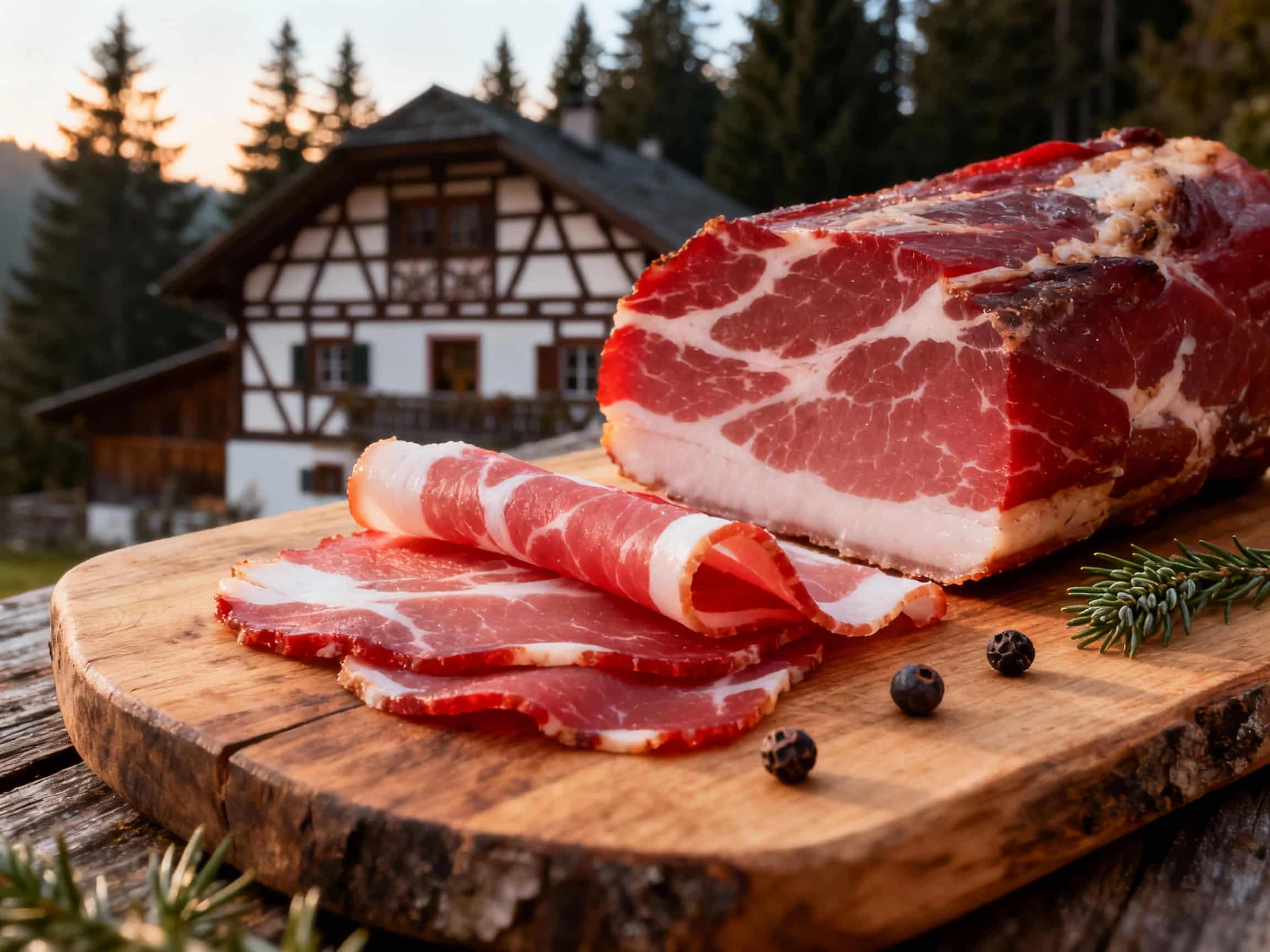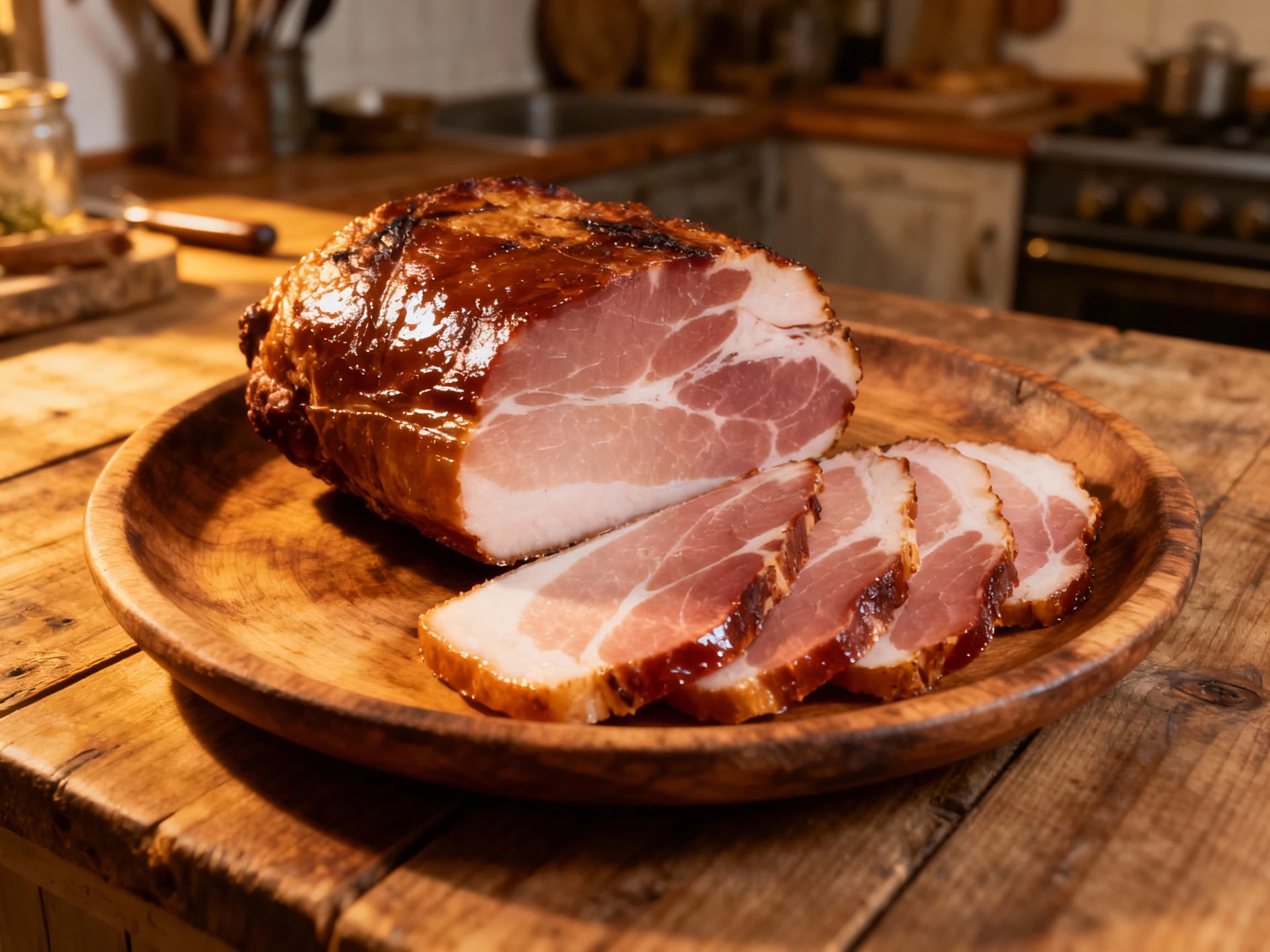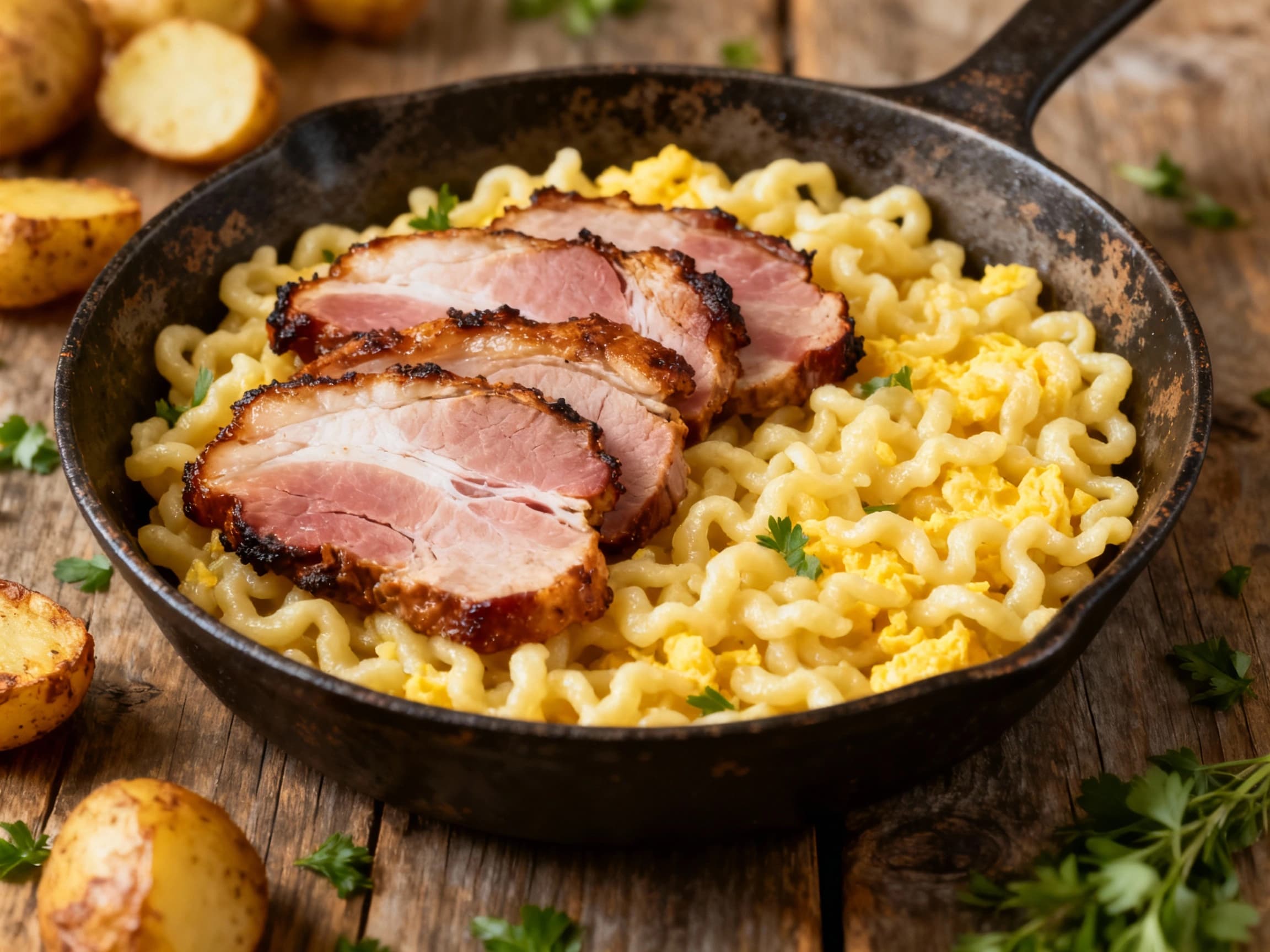
Schwarzwälder Schinken
Schwarzwälder Schinken
- Country
- Germany
- Region
- Black Forest
- Recipes
- 3 Recipes
Dish information
Schwarzwälder Schinken, often referred to as Black Forest Ham, is not merely a cured meat but a culinary icon hailing from the picturesque Black Forest region of Germany. Its origins are deeply intertwined with the historical need for preserving pork during leaner times, a practice refined over centuries. The name itself evokes the mystique of the Black Forest, a dense, mountainous area known for its dark pine forests and traditional woodworking. The ham's distinctive character comes from a unique curing process. Fresh pork leg is first cured with a salt and spice mixture, which typically includes juniper berries, black peppercorns, and garlic. Following the curing, a crucial step is the smoking process, traditionally over a bed of local pine and fir needles, which imparts the characteristic smoky aroma and flavor. This method is not just about taste; it's about capturing the essence of the forest. The process can take months, ensuring the ham develops its firm texture and rich, complex taste. Historically, Schwarzwälder Schinken was a staple in the diet of forest dwellers and farmers, a testament to their resourcefulness. Over time, its reputation spread beyond the region, becoming a prized delicatessen item sought after by gourmands worldwide. While specific historical figures are not directly attributed to its invention, its evolution is a testament to generations of Bavarian and Swabian farmers and butchers who perfected the art of curing and smoking meats. The advent of modern refrigeration and preservation techniques has allowed for more consistent production, but traditional methods are still highly valued. The region itself, with its charming villages and traditional homesteads, remains the spiritual home of this renowned ham, with many producers adhering to time-honored techniques for protected geographical indication (PGI) status, ensuring its authentic heritage is preserved.
Timeline
Early preservation techniques involving salting and smoking become common in rural German regions, including the Black Forest.
The unique characteristics of Black Forest ham begin to be recognized beyond the local area, thanks to improved travel and trade.
The first documented mentions of 'Schwarzwälder Schinken' appear in regional cookbooks and culinary journals.
The ham gains significant popularity across Germany and starts being exported to international markets.
Industrialization of food production leads to more standardized methods, but traditional smoking techniques remain prized.
Schwarzwälder Schinken is granted Protected Geographical Indication (PGI) status by the European Union, safeguarding its authenticity.
Chefs and food enthusiasts rediscover and celebrate traditional methods, emphasizing the artistry and regional provenance of the ham.


